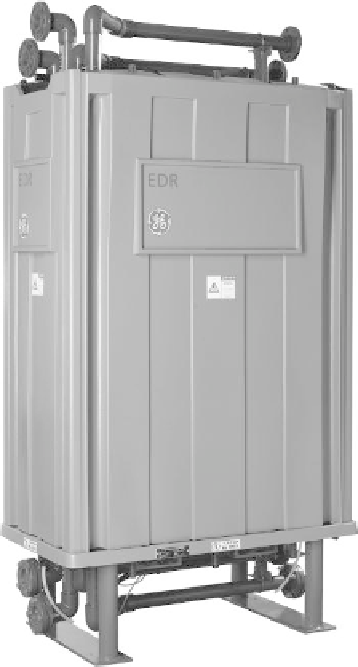Environmental Engineering Reference
In-Depth Information
FIGURE 39.5
EDR technology achieves high water recovery for water scarce areas. Because of the polarity reversal
design, EDR for wastewater reuse is a self-cleaning, durable membrane system ideal for turbid wastewater.
GE's wastewater EDR systems reclaim more than 20 million gallons per day (75,000 m
3
/day) of wastewater
for other uses.
transferred into the adjacent concentrating compartments. As the strong ions are removed
from the dilute process stream, the conductivity becomes quite low. This relatively pure
water helps to set the stage for further chemical reactions. The electrical potential splits
the water at the surface of the resin beds, producing hydrogen and hydroxyl ions, which
act as continuous regenerating agents of the ion-exchange resin. These regenerated resins,
in turn, act as microregions of high or low pH permitting ionization of neutral or weakly
ionized aqueous species, such as carbon dioxide or silica. Once these species acquire a
charge, they become subject to the inluence of the strong DC ield and are removed from
the diluting compartment through the ion-exchange membranes. The membranes used in
EDI stacks are lat sheet, homogeneous, ion-exchange membranes, which help to provide
eficient ion transfer.
First introduced commercially about two decades ago, EDI is a polishing technology that
requires RO as pretreatment; the combination of RO-EDI provides a continuous, chemical-
free system that may achieve overall water recoveries of greater than 90%.

